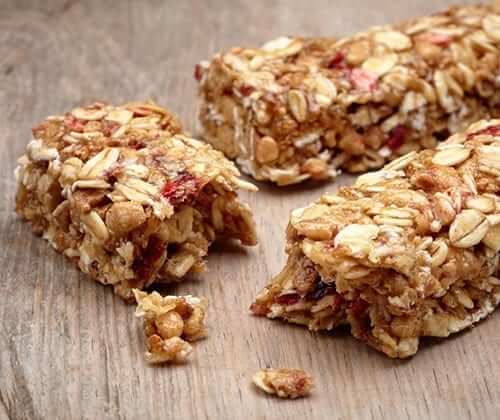Energy bars are one of the most popular food products today. People grab them for a quick snack or to replace a meal on-the-go. But are energy bars as beneficial as they claim to be? Consider these facts about energy bars to make an educated decision.
- Energy bars were once only available at health food stores and specialty shops. Now energy bars are found at local supermarkets and convenience stores. Not all energy bars are created equal. There are literally hundreds of choices on the grocer’s shelves. Some have high protein while others have moderate protein. There are energy bars for weight loss and meal replacement. There are also high carbohydrate energy bars to fuel your day. Often energy bars contain sugar and saturated fat. Some are no better than a high calorie candy bar or granola bar. Choosing the right energy bar can be challenging, especially for people with diabetes.
- Carefully read the labels on energy bars. Each bar should only be one serving and contain 200 calories or less. Look for ingredients such as whole grains, casein and whey. Avoid bars with Trans fat or more than 1 gram of saturated fat. Sugar should never be one of the first ingredients listed on the packaging. An energy bar should have 3 grams of fiber or more and up to 15 grams of protein. Opt for an energy bar with 30 grams of carbohydrates or less to avoid blood sugar spikes. The fewer ingredients listed on the packaging, the better.
- Diabetic snack bars are made to help prevent hypoglycemia or reduce hyperglycemia. They can fit into your individual meal plan as a snack or to replace a meal. Eating an energy bar on-the-go is better than skipping a meal. It can help to maintain your blood sugar levels to avoid dangerous surges. Most energy bars are not made to act quickly and should not be used to treat hypoglycemia. Energy bars can be helpful in preventing hyperglycemia.
- Diabetic energy bars can be used before bed, prior to exercising or whenever low blood glucose tends to happen. Extend Bars can reduce episodes of low blood glucose for up to 9 hours without causing high blood glucose. The key ingredient is uncooked corn starch, a carbohydrate that metabolizes slowly.
- Energy bars with uncooked corn starch (UCS) are the preferred choice for people with diabetes. Regular snacks and energy bars can metabolize within a 2 hour period. This causes your blood sugar to rise rapidly. Your body responds to the surge with insulin, causing your blood sugar to plummet. The result is a feeling of fatigue and hunger. Energy bars with UCS help prevent the spike-crash crave cycle to help regulate your blood sugar levels.
- Energy bars for people with diabetes can help you reduce the risk of hypoglycemia at night by up to 75 percent. You can also avoid blood sugar highs after snacking and control hunger between meals. This makes it easier to lose weight and still have plenty of energy to get through a rigorous exercise routine. However, energy bars are not meant to replace more than one meal or snack during the day. It is essential to have a well-balanced diet that includes meat or fish, low-fat dairy and whole grains as well as fruits and vegetables.
Energy bars can be an important part of a healthy individualized meal for people with diabetes. Having an energy bar as a snack or to replace an occasional meal can help prevent blood sugar surges. Always read the labels on energy bars and check your glycemic response to them.







Leave A Comment